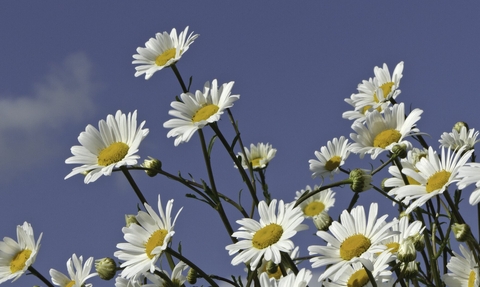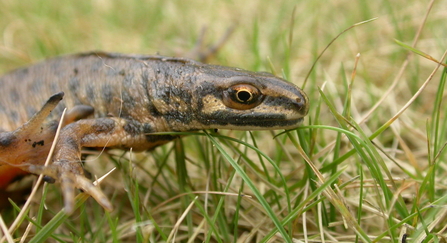
Ox-eye daisies (Leucanthemum vulgare) in herb rich conservation margin at RSPB's Hope Farm in Cambridgeshire. May 2011. - Chris Gomersall/2020VISION
Wildlife Gardening Tips for July
Build a home for newts
A rock pile is a great thing to add to your garden for wildlife, especially in conjunction with a garden pond. Amphibians such as Great Crested Newts and Toads will crawl into the cracks in the stones for shelter and hibernation sites, and they will be used by a myriad of invertebrates. Creating a rock pile is incredibly simple. Just follow the steps below:
- Choose a site for your rock pile. Near to a pond is ideal as newts and other amphibians will not have to go far to find shelter. Even better if it is amongst long grass as this will provide food and a safe passage between the pond and shelter.
- Source some stone. This could simply be rubble from a nearby building site – newts aren’t fussy! But if you would like it to look neater, you can source some more decorative stone.
- Pile the rocks together any way you wish, but ensure that there will be spaces in between the rocks and under them for newts to crawl into. Newts are unlikely to climb so it would be better if the rock pile is wider than it is high.
If you’re up for a challenge, you could turn this rock pile into a drystone wall.

© Philip Precey
Meadow management
To help the flowers establish well in your meadow, give it a cut now in its first year to stop the grass taking over. Make sure you remove the cuttings. Remove unwanted weeds like docks. A perennial meadow will not usually flower in its first year.
Top up the bird bath
Make sure the bird bath is kept topped up with water in hot weather. It will be used by invertebrates and mammals as well as birds. If you don’t have a bird bath, put out a plate of water, slightly elevated on a brick or up on a table.
